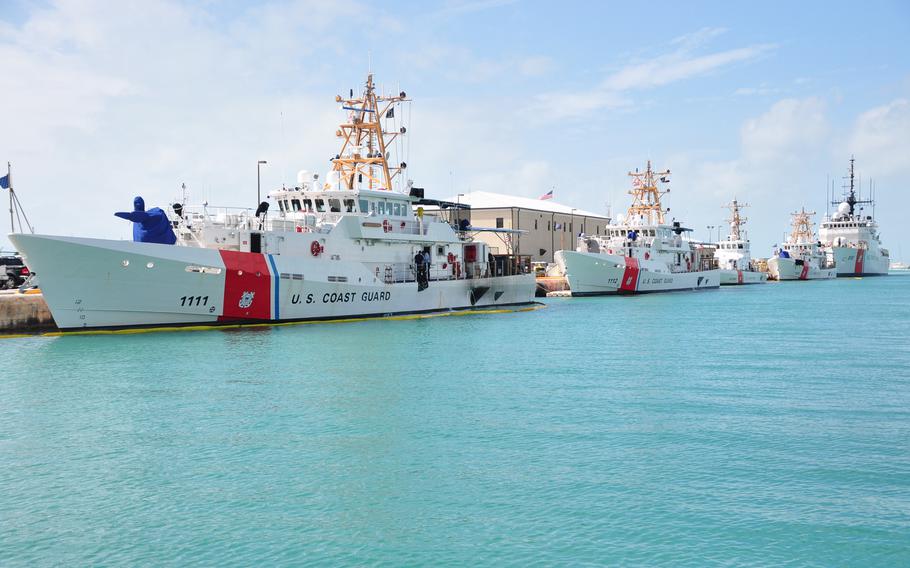
Coast Guard cutters are shown moored to the pier at Coast Guard Sector Key West, Florida in 2016. (Melissa Leake/U.S. Coast Guard)
MIAMI (Tribune News Service) — The U.S. Coast Guard said Tuesday night that it will be surging ships, boats and aircraft to South Florida and other areas of the country to bolster anti-maritime migration efforts to comply with President Donald Trump’s executive order to use the nation’s military to defend the border.
The announcement comes the same day the acting Secretary of Homeland Security Benjamine Huffman fired Adm. Linda Fagan as commandant of the Coast Guard, which is responsible for maritime security. Fagan was not only the first woman to lead the Coast Guard, but also the first woman in uniform to head any branch of the country’s armed forces.
Although the Coast Guard is a military branch, it falls under the command of Homeland Security since it’s also a federal law enforcement agency.
Adm. Kevin Lunday, acting commandant, released a statement Tuesday noting the decision to flood South Florida and other U.S. maritime borders with more Coast Guard members and assets is in adherence with Trump’s executive order on border security.
Lunday said he has directed the agency’s operational commanders to surge “cutters, aircraft, boats and deployable specialized forces” to the Florida Straits “to deter and prevent a maritime mass migration from Haiti and/or Cuba.”
Other areas of the U.S. and its territories that will see an increased Coast Guard presence, per the announcement, are the maritime border between the Bahamas and Florida, Alaska, Hawaii, Guam, the Commonwealth of the Northern Mariana Islands, American Somoa, Puerto Rico and the U.S. Virgin Islands.
The Coast Guard will also be sending personnel and assets to the southwest maritime border between Texas and Mexico in the Gulf of Mexico and the Pacific Ocean, reads the announcement, which refers to the Gulf of Mexico as the “Gulf of America” — renamed by Trump in another executive order Monday.
Lunday also directed the Coast Guard to support U.S. Customs and Border Protection’s anti-migrant efforts in maritime areas of the southwest U.S. border.
Maritime migration from both Cuba and Haiti has slowed significantly since both the state of Florida and the Biden administration deployed increased forces to South Florida and the Keys after a surge in landings in late 2022 and early 2023 overwhelmed local law enforcement.
So many people from Cuba were arriving during that time that the federal government was forced to close Dry Tortugas National Park, located about 70 miles from Key West, in January 2023. About 300 people from Cuba had landed at the park in the weeks following New Year’s Day of that year.
However, after Florida National Guard soldiers, Florida Highway Patrol troopers and Florida Fish and Wildlife and Conservation Commission officers — as well as more Coast Guard and Customs personnel sent by the federal government — began to bolster patrols in the Keys, arrivals slowed precipitously.
While migrant boats are still being stopped along the Florida Straits, arrivals on land went from an almost daily occurrence to barely one per month.
Haitian migrant arrivals also increased significantly between 2022 and 2023, but less frequently, albeit in larger boats and groups than those coming from Cuba. However, despite ongoing turmoil and increased violence from armed gangs, maritime migration from Haiti to South Florida has also dropped significantly.
The last large arrival of Haitians in South Florida was when a sailboat carrying about 120 people arrived in Key West in June.
©2025 Miami Herald.
Visit miamiherald.com.
Distributed by Tribune Content Agency, LLC.